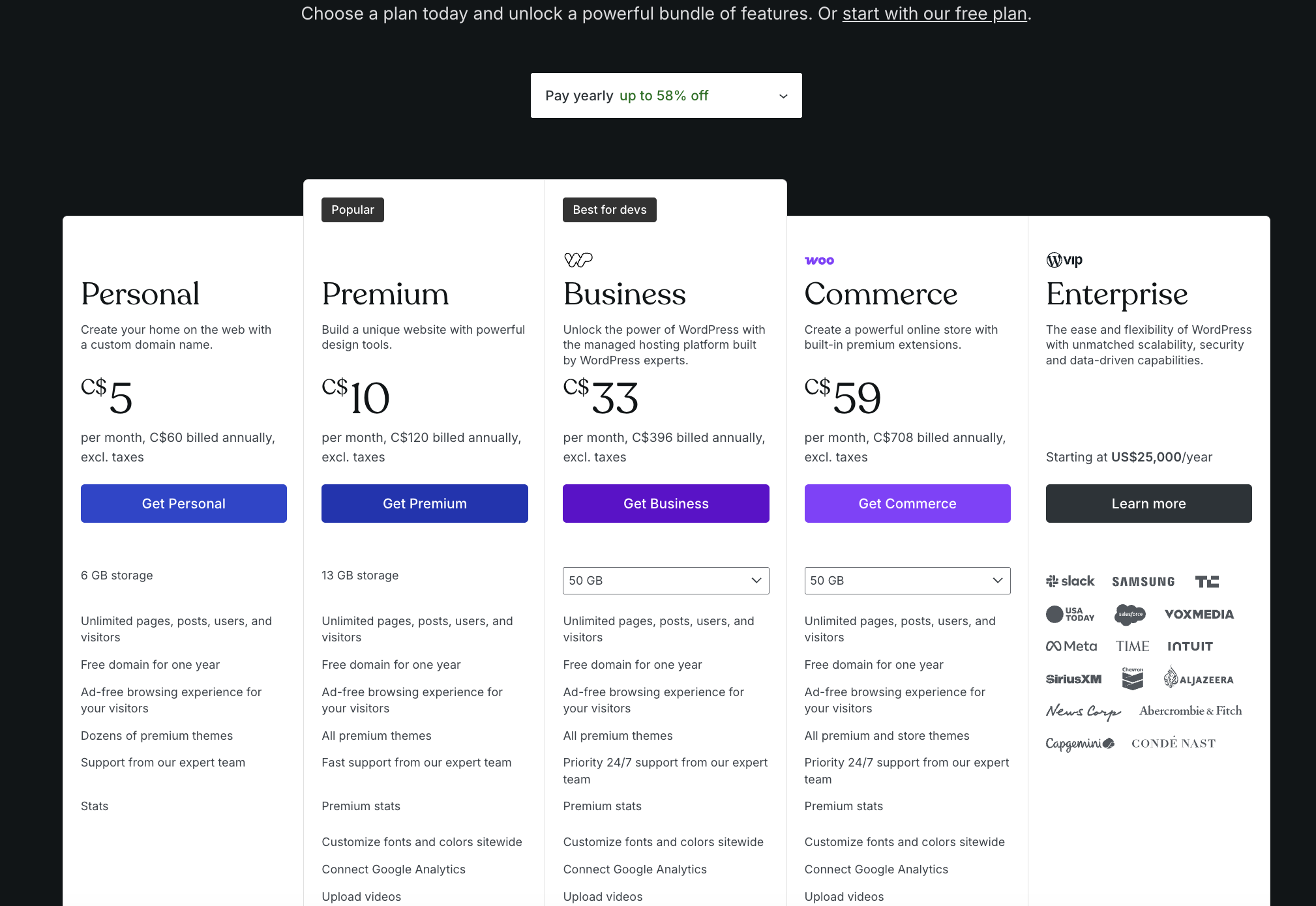WordPress.com Plans Page Redesign

Project Overview: As part of the WordPress.com Growth team at Automattic, I led the redesign of the plans page—a critical conversion point where users select and purchase WordPress.com subscriptions. This project involved creating a component-based UI system that could accommodate high-velocity product changes while providing a clear, user-friendly experience.
Objectives
- Create a more intuitive plans selection interface to improve conversion rates
- Develop a flexible component architecture that could adapt to frequent product changes
- Reduce support tickets related to plan selection confusion
- Implement data-driven optimization through A/B testing
Features
-
Component-Based UI System:
- Architected an intent-based React/Redux component system that separated presentation from business logic
- Created reusable components that could be easily reconfigured as plans and features changed
- Implemented Emotion CSS-in-JS for styled components with consistent theming
-
Dynamic Plan Comparison:
- Developed interactive comparison tools that highlighted differences between plan tiers
- Created visual indicators for recommended plans based on user needs
- Implemented feature tooltips and expandable sections for detailed information
-
Optimized Purchase Flow:
- Streamlined the steps between plan selection and checkout
- Added contextual upsell opportunities based on user selection patterns
- Implemented form validation and error prevention to reduce purchase friction
-
A/B Testing Framework:
- Created a system for testing variations of page layouts, copy, and pricing presentation
- Integrated analytics to measure impact on conversion rates and user engagement
- Established a process for rolling out successful variants to all users
Technology Stack
- Frontend: ReactJS, Redux for state management
- Styling: Emotion CSS-in-JS
- Testing: Jest, React Testing Library
- Analytics: Custom event tracking and funnel analysis
Outcome
The redesigned plans page significantly improved the user experience and business metrics, leading to a 47% improvement in purchase conversions and a 50% reduction in support tickets related to plan selection. The component architecture proved highly adaptable, allowing the team to quickly implement product changes and optimization insights without major refactoring.